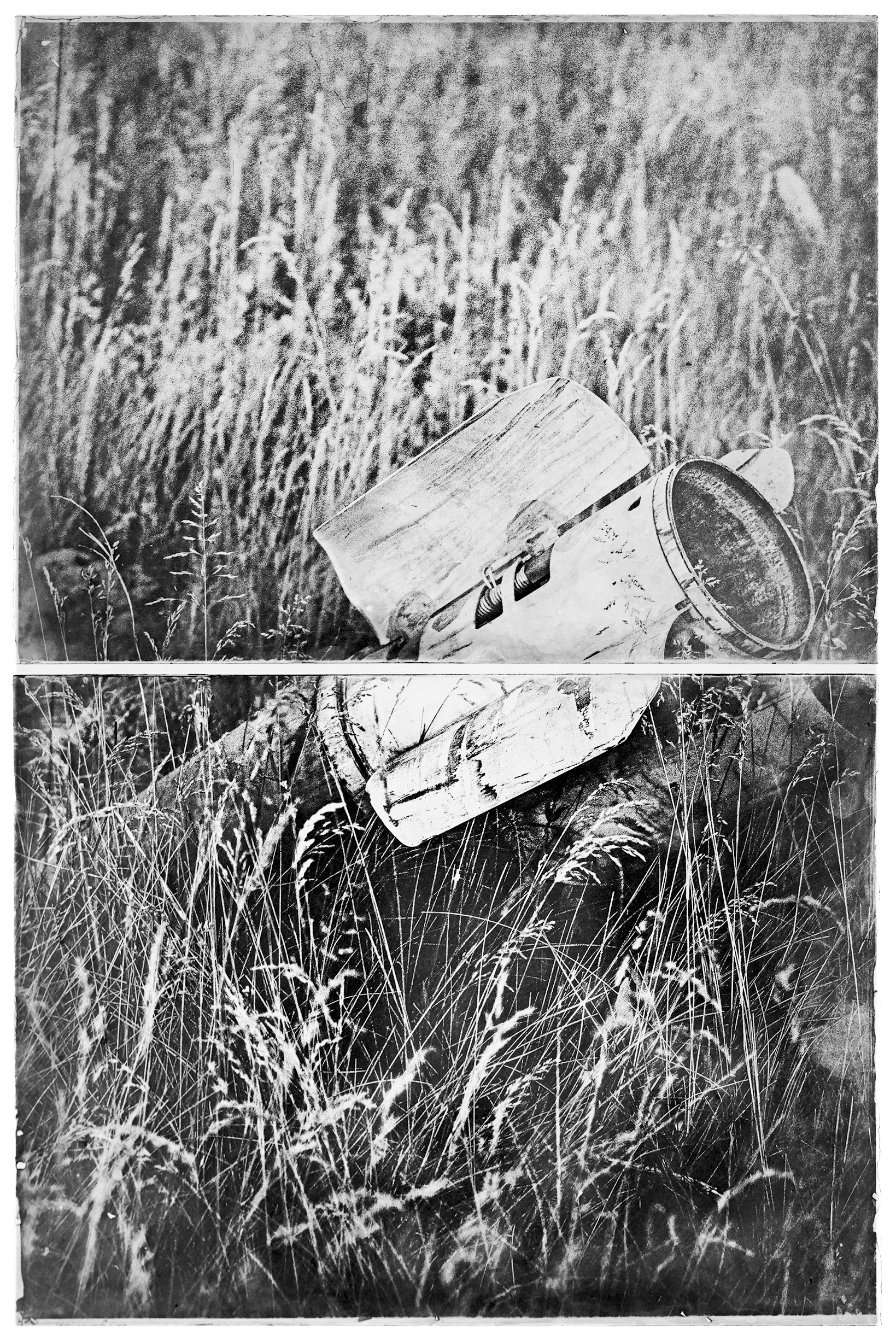CHLOE SHARROCK
Il hurlait encore
Born from a process of curating and reinterpreting my own photographs captured in a journalistic context within conflict zones (Iraq, Syria, Ukraine...), Il Hurlait Encore questions the almost mechanical repetitiveness of wars and the public's consumption and assimilation of the imagery they generate.
These widely disseminated images are repeated across media to the point of banality. From one territory to another, from one decade to the next, the same iconographic system unfolds, creating an exponential visual cacophony in which martial symbolism seems to lose its meaning. The speed of dissemination and immaterial nature of these images, particularly in the age of social media, only amplify their emptiness, rendering them all too easily absorbed by an increasingly numb audience.
Is violence not only systematic but also systemic in its appearance?
Images of war become akin to modern icons, repeated and "venerated" in an endless cycle, much like religious icons that, through repetition, lose their revelatory power and devolve into objects of worship devoid of true spiritual charge. War becomes a visual spectacle, its suffering frozen in standardized images we gaze upon without truly seeing.
By copying, distorting, and reproducing these photographs in a near-mechanical manner using reproducibility tools such as photogravure or photocopying, new images are created. These disrupt the boundaries between the conflicts represented, and this hybrid process gives rise to a shared, new iconography: a visual entanglement in which the original sources of the images dissolve.
The degradation of these images, resulting from these repetitive processes, gives way to parasitic distortions—an ultimate white noise adding to the initial clamor. These images are no longer mere symbols of war; they become damaged visual artifacts, marked by systemic and dehumanized violence.
Through this process, the work with materials—using organic elements like charcoal—restores corporeality and singularity to these images. They mutate from immaterial digital representations into enduring objects, fostering reflection on reality and their own clamor.
From all these deformed images, what remains is one long, unending scream. A scream that ties together these fragmented visual representations of modern violence. A scream that challenges our perception of reality and the noise that accompanies it.
























